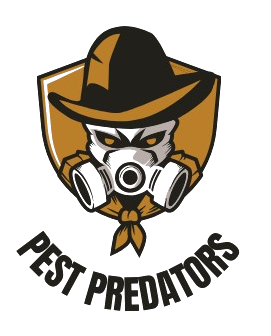Ever found yourself wondering, how on earth did moths get in my house? You're not alone. It often feels like they appear from nowhere, but the truth is usually quite simple: they either flew in, hitched a ride, or found a sneaky way through a crack.
Our homes are warm, sheltered, and often lit up at night—basically, a perfect refuge for a moth. It’s almost inevitable they’ll find their way in eventually.
Decoding the Sudden Arrival of Moths
It’s baffling when you suddenly spot moths fluttering around indoors, but their arrival typically follows one of three predictable routes. Think of your home as a fortress; moths are opportunistic invaders just looking for a way past your defences.
Sometimes, the breach is obvious. A moth might just drift in through an open door or window on a warm evening, drawn in by your indoor lights. This is the most direct route, and it usually involves outdoor moths that are more of a fleeting nuisance than a threat to your belongings.
The Unseen Hitchhikers
More often than not, though, moths arrive as unseen stowaways. Their journey into your home doesn't start with an adult moth but with tiny, almost invisible eggs or larvae hitching a ride on everyday items.
These clandestine travellers can be found on:
- Textiles and Fabrics: That vintage rug, piece of secondhand furniture, or even a wool coat from a charity shop can easily harbour clothes moth eggs.
- Stored Food Products: Pantry moths are notorious for getting in via bags of flour, cereal, birdseed, or even pet food you've brought home from the shop.
Once inside, these tiny larvae find a quiet, dark spot—like the back of a wardrobe or a forgotten corner of your pantry—and start to develop. By the time you spot the first adult moth, a quiet infestation might already be well underway.
While finding a moth infestation can be distressing, it’s important to remember it’s not generally dangerous. That said, it can become a serious nuisance if left to its own devices.
UK pest control reports often show a spike in moth infestations during the warmer months, as the higher temperatures help larvae develop much faster. As the experts always say, identifying the specific type of moth is crucial. Clothes moths and pantry moths have very different habits and entry routes, meaning they require completely different strategies to get rid of them.
To help you pinpoint the source, here’s a quick summary of the most common ways moths get inside.
Top Three Ways Moths Get Inside
| Entry Method | How It Happens | Common Moth Types |
|---|---|---|
| Flying In | Moths are attracted to light and fly in through open doors, windows, or vents, especially at night. | Outdoor moths, sometimes Common Clothes Moths. |
| Hitchhiking on Goods | Eggs or larvae are carried in on infested items like wool, silk, furniture, or pantry goods. | Clothes Moths, Case-Bearing Moths, Pantry Moths. |
| Structural Gaps | Moths can find their way through small, unnoticed cracks in walls, foundations, or around pipes. | Various species, especially if there's a nearby source. |
Understanding these entry points is the first step. By knowing how they get in, you can start to build a better defence to keep them out for good.
Identifying Your Uninvited Houseguests

Before you can get rid of a moth problem, you need to know exactly what you're up against. Think of yourself as a detective for a moment; you have to identify the culprit to understand their habits. In most UK homes, the moths causing trouble fall into two main camps, and they have very different tastes.
On one side, you have the fabric-chewing clothes moths. On the other, the food-raiding pantry moths. Knowing which one you’re dealing with is the first and most critical step to winning back your space.
Meet the Clothes Moth
Clothes moths are the quiet vandals of the insect world. You often won’t even realise they’re there until you pull a favourite jumper out of storage and find it full of holes.
These are small moths, usually only about half an inch in wingspan, with a plain, almost boring appearance. Their colour is typically a solid beige or a buff-gold, and they don’t have any of the fancy patterns you see on their pantry-loving cousins.
Key identifiers for clothes moths include:
- Weak Flyers: You won't find these fluttering wildly around your light fittings. They prefer to scuttle away or take short, clumsy flights when you disturb them.
- Hate the Light: They thrive in dark, undisturbed places. This is precisely why wardrobes, chests of drawers, and forgotten corners in the loft are their ideal breeding grounds.
- It's the Larvae!: Here’s the important bit: the adult moths don't actually eat your clothes. The real damage is done by their larvae – tiny, grub-like caterpillars that feast on natural fibres like wool, silk, cashmere, and fur.
The most common offender in UK homes is the Common Clothes Moth (Tineola bisselliella). If you spot small, golden-coloured moths hiding in the back of your wardrobe, this is almost certainly your uninvited guest.
Meet the Pantry Moth
Pantry moths, often called Indian Meal Moths (Plodia interpunctella), are a completely different beast. These are the moths you’ll see fluttering erratically around your kitchen, usually near the ceiling or lights, especially at night.
They're a bit bigger and more striking than clothes moths. The front half of their wings is a pale grey or tan, while the outer half has a coppery, reddish-brown colour. This distinct two-tone pattern makes them fairly easy to spot.
If you see these, you’ve got a problem with your stored food. Their larvae are relentless eaters of just about any dried goods you can think of.
Signs of a pantry moth problem:
- Adults in the Kitchen: Seeing adult moths flying around your kitchen or pantry is the most obvious red flag.
- Webbing in Food: The larvae spin silky webs as they eat, which clumps food particles together. Have a look in bags of flour, cereal, pasta, grains, and even pet food for these tell-tale signs.
- Grubs on the Move: You might even find small, white, worm-like larvae crawling on pantry shelves or, in bad infestations, on the ceiling.
Knowing the difference between these two is absolutely vital. A strategy designed for clothes moths will do nothing for pantry moths, and vice versa. By correctly identifying your guest, you can focus your efforts on the right part of the house and use the right methods to show them the door for good.
Finding Their Secret Entry Points
Moths don’t need an open invitation to wander into your home. While a window left ajar on a summer evening is the most obvious route, they are surprisingly good at exploiting tiny, overlooked gaps in your home's structure you might never even notice. Think of it like a security audit of your house, but for insects.
Finding these subtle entryways is the first real step towards keeping them out. Moths are masters of infiltration, capable of squeezing through cracks you wouldn't think possible. A thorough inspection turns the vague question of "how do moths get in?" into a clear, actionable checklist of vulnerabilities to fix.
Common Structural Vulnerabilities
The weak points in your home's defences are often found where different materials meet or where pipes and cables enter the building. Unlike mice, which can gnaw their way through weak spots, moths rely on pre-existing openings. Interestingly, if you're also worried about larger pests, you'll see a lot of overlap in how different species exploit these structural gaps. You can learn more by exploring our guide on how mice get into your house.
For moths, it’s worth starting your search at these common hotspots:
- Damaged Screens: Even a tiny tear in a window or door screen is a wide-open door for a determined moth.
- Gaps Around Pipes: Look where utility pipes for water, gas, or cables enter your home. The small gaps around them are classic entry points.
- Uncapped Chimneys: An open chimney is like a motorway for moths and other insects, leading them straight into your living space.
- Dryer and Bathroom Vents: Vents leading outside should have effective covers or flaps to stop pests from crawling back in when they aren't in use.
Once inside, moths find our homes incredibly inviting, as this image clearly shows.

It’s no surprise they stick around—the conditions they need to thrive are often the very same ones we create for our own comfort.
To help you pinpoint exactly where your home might be letting moths in, we've put together a simple checklist.
Home Vulnerability Checklist for Moth Entry
This table breaks down the most common structural weak points that moths exploit, how much of a risk they pose, and what you can do about them.
| Vulnerability Point | Risk Level | Recommended Solution |
|---|---|---|
| Gaps around window/door frames | High | Apply exterior-grade caulk or sealant to close all gaps. |
| Torn or damaged fly screens | High | Repair small tears with a screen patch kit or replace the entire screen. |
| Unsealed gaps around utility pipes | Medium | Fill spaces around pipes with expanding foam or steel wool and sealant. |
| Open chimneys or flues | Medium | Install a chimney cap with a mesh screen to block access. |
| Vents without protective covers | Medium | Fit all external vents (dryer, bathroom) with pest-proof covers. |
| Cracks in foundation or brickwork | Low | Seal any visible cracks with appropriate mortar or sealant. |
Working your way through this list is one of the most effective preventative measures you can take. By sealing these entry points, you’re not just stopping moths; you're strengthening your home's overall defence against all sorts of pests.
The Threat From Outside
Sometimes, the entry point isn't a crack in the wall but simply your home's proximity to an infested area. In parts of the UK, especially London and Derbyshire, the Oak Processionary Moth (OPM) has become a significant issue. These moths don't actively seek out homes, but their caterpillars can wander from nearby infested oak trees and accidentally find their way inside during their active season.
The Forestry Commission has warned that warmer weather has led to a higher-than-usual growth of OPM, increasing this risk for homes near wooded areas. Staying informed about local outbreaks is key.
Simple fixes can make a huge difference. Applying a bit of caulk or sealant around pipes, repairing screens with patch kits, and installing mesh covers on vents are all straightforward jobs. Taking these small, manageable steps helps transform your home from an inviting target into a secure fortress against these unwanted guests.
What Actually Attracts Moths Indoors

It’s a common misconception that moths just wander into your home by accident. The truth is, they’re guided by a powerful set of instincts that make your space an irresistible destination. While most of us know that moths flutter towards lights, that’s only one part of the story.
This attraction to light, scientifically known as phototaxis, is why you’ll often see moths bumping against your windows at night. Lit windows act like a beacon, drawing them in from the dark. But here’s the twist: many of the moths that cause real damage, like clothes moths, actually prefer the dark.
For these destructive species, other senses kick in, guiding them directly to everything they need to survive and multiply.
The Power of Scent
Think of a moth's antennae as a highly sensitive nose, one that can pick up faint smells from an incredible distance. What might smell like a cosy home to you often smells like a five-star restaurant to a moth.
Of course, what’s on the menu depends entirely on the species.
- Pantry Moths: These pests are drawn to the scent of dried foods. Think grains, cereals, flour, nuts, and even the dog’s kibble.
- Clothes Moths: These are specialists. They’re hunting for keratin, a protein found in natural animal fibres like wool, silk, fur, and cashmere.
This is exactly why that forgotten bag of birdseed or a vintage wool coat can quickly become ground zero for a full-blown infestation. Moths, like many other pests, simply follow their senses to a reliable food source. You can see a similar pattern in our guide on what attracts rats to your house, where food and shelter are also the main draws.
Creating the Perfect Environment
Beyond just light and scent, moths are on the lookout for specific conditions. They need a safe, stable place to lay their eggs where their larvae will have the best possible chance of survival.
Your house often provides this perfect blend of elements without you even realising it.
Moths are surprisingly common across the country. The UK's National Moth Recording Scheme has logged over 43 million moth records, showcasing the sheer scale of the population. While overall numbers are in decline, certain species can experience population spikes, which increases the likelihood of them finding their way into homes.
The two biggest environmental factors are warmth and shelter. Moths thrive in quiet, dark, and undisturbed spots where they won't be bothered. This is why you’ll often find an infestation starting in a place you rarely check—the back of a wardrobe, a forgotten chest of drawers, or the top shelf of your pantry.
By understanding what they’re looking for, you can start making your home far less inviting.
Practical Strategies for Moth Prevention

When it comes to moths, prevention is always better than cure. The most effective way to handle an infestation is to make sure one never gets started in the first place. This isn't about harsh chemicals; it's about shifting from reactive panic to proactive habits that turn your home into a fortress they simply can't breach.
Your defence plan should focus on the two main battlegrounds: the wardrobe and the pantry. By understanding what moths are looking for in these areas, you can disrupt their plans and create a long-term, moth-free environment. It’s all about removing the very things that attract them.
Safeguarding Your Wardrobe
For clothes moths, your wardrobe is paradise. It offers dark, quiet spaces and, most importantly, a buffet of natural fibres. But here’s the secret: their larvae aren't just after the fabric itself. They're drawn to the traces of sweat, skin cells, and tiny food stains left on worn clothes.
That makes cleaning your garments before storing them your single most powerful weapon. Always wash or dry-clean wool, silk, and cashmere items, especially before packing them away at the end of the season. This simple step removes the keratin and other organic goodies that moth larvae feed on, making your clothes far less appealing.
Once everything's clean, proper storage is your next line of defence.
- Airtight Containers: For out-of-season jumpers and precious items, use vacuum-sealed bags or plastic containers with tight-fitting lids.
- Garment Bags: If you need to hang items, stick to breathable garment bags. Steer clear of plastic covers, as they can trap moisture and lead to mildew.
- Regular Inspections: Every few months, take things out, give them a good shake, and check for any signs of trouble. This disturbance is often enough to disrupt their life cycle.
Natural repellents like cedar and lavender are a fantastic addition to your strategy. Cedar contains oils that are toxic to moth larvae, while the strong scent of lavender can confuse and deter adult moths, making it much harder for them to find a good spot to lay their eggs.
Protecting Your Pantry
Pantry moths have a different goal: they’re after your dried goods. More often than not, they get into our homes by hitching a ride in packaged foods straight from the supermarket. So, your first line of defence starts before you even unpack your shopping.
Take a moment to inspect the packaging of flour, cereal, grains, and pet food for any tiny holes or webbing. Even a minuscule tear is a potential open door for larvae. Once you get these items home, the next step is crucial for stopping a small problem from becoming a widespread infestation.
Get into the habit of decanting all your dried goods into airtight containers made of glass, metal, or hard plastic. Pantry moth larvae can chew right through cardboard boxes and thin plastic bags, but they can’t get past a properly sealed jar. This one simple habit can contain a potential problem to a single container instead of your entire cupboard.
Beyond secure storage, a clean pantry is non-negotiable.
- Clean Up Spills Immediately: Crumbs and spilled flour are an open invitation for all sorts of pests.
- Wipe Shelves Regularly: A quick wipe-down once a month removes the food residue that could attract moths.
- First-In, First-Out: Use up your older products first to ensure nothing is left sitting at the back of the cupboard for too long.
By making these small adjustments, you build a robust defence system. If, however, an infestation has already taken hold and is proving difficult to manage, calling in a professional is the wisest move. You can learn more about expert pest control services that can resolve persistent issues for good.
Your Questions About House Moths Answered
Right, so you’ve found the culprits and started moth-proofing your home, but a few nagging questions are probably still buzzing around. It’s completely normal. Getting to grips with the finer details is the key to managing the problem properly and getting some peace of mind.
Let's tackle the most common worries we hear from homeowners, from whether they’re dangerous to figuring out when a couple of moths means you’ve got a much bigger issue on your hands. We’ll give you clear, straight answers so you can move forward with confidence.
Are House Moths Dangerous to People or Pets?
This is usually the first question on everyone's mind. The good news is that common house moths, like clothes moths and pantry moths, are not dangerous to you, your kids, or your pets. They don’t bite, they don’t sting, and they don’t carry diseases.
Their impact is purely destructive, and it’s the larvae you really need to worry about. Clothes moth larvae will happily chew through your expensive woollens, while pantry moth larvae will contaminate your food, making it completely inedible. So, while they are a serious nuisance, they aren't a direct threat to your family's health.
Does One Moth Mean I Have an Infestation?
Spotting a single moth fluttering around a light can be unnerving, but don’t panic just yet. It doesn’t automatically signal a full-blown infestation. It could easily be an outdoor moth that simply flew in through an open window, posing no threat to your home.
However, if that moth looks like a clothes or pantry moth, treat it as a warning shot. It’s a clear sign that you need to do a bit of detective work.
A single moth might just be a scout or the first of a newly hatched generation. The key is to look for other evidence before you know the true scale of the problem.
To figure out if you're dealing with a lone wanderer or the start of a bigger issue, you need to look for more definitive signs. These clues will tell you everything you need to know.
What Are the Real Signs of a Moth Infestation?
Since the adult moths are often just the tip of the iceberg, you need to hunt for the evidence their larvae leave behind. These are the true indicators of an active, growing population.
For Clothes Moths, look for:
- Irregular Holes: Small, random holes in jumpers, coats, and carpets made from natural materials like wool or silk.
- Webbing or Cocoons: You might find silky webbing in the corners of wardrobes or on clothes, often looking like tiny tubes or patches.
- Larvae: Tiny, creamy-white caterpillars on the fabrics themselves.
For Pantry Moths, check for:
- Clumped Food: Webbing inside packets of flour, cereal, pasta, or even pet food, causing the contents to stick together in clumps.
- Unpleasant Odour: A faint, musty smell coming from infested food items.
- Visible Larvae: Small, worm-like larvae crawling on your pantry shelves or, in bad cases, even on the ceiling.
When Should I Call a Professional?
For minor issues, a good clean-out and some preventative measures are often very effective. But sometimes, the problem is just too widespread or stubborn for DIY methods. If you’ve cleaned and secured everything but you’re still finding evidence of moths, it’s time to call in the professionals.
Consider getting expert help if you notice:
- The damage is spreading quickly to multiple rooms or items.
- You’re seeing signs of an infestation in valuable or hard-to-treat things like antique furniture or large rugs.
- Moths just keep coming back, no matter how much you clean.
A professional can identify the exact species, find hidden breeding spots, and use targeted treatments that are far more effective than anything you can buy in a shop. They offer a proper, lasting solution to protect your home.
If a moth problem feels overwhelming, the experts at Pest Predators Limited offer tailored, evidence-based solutions to eliminate infestations for good. Learn more about our professional pest control services.



